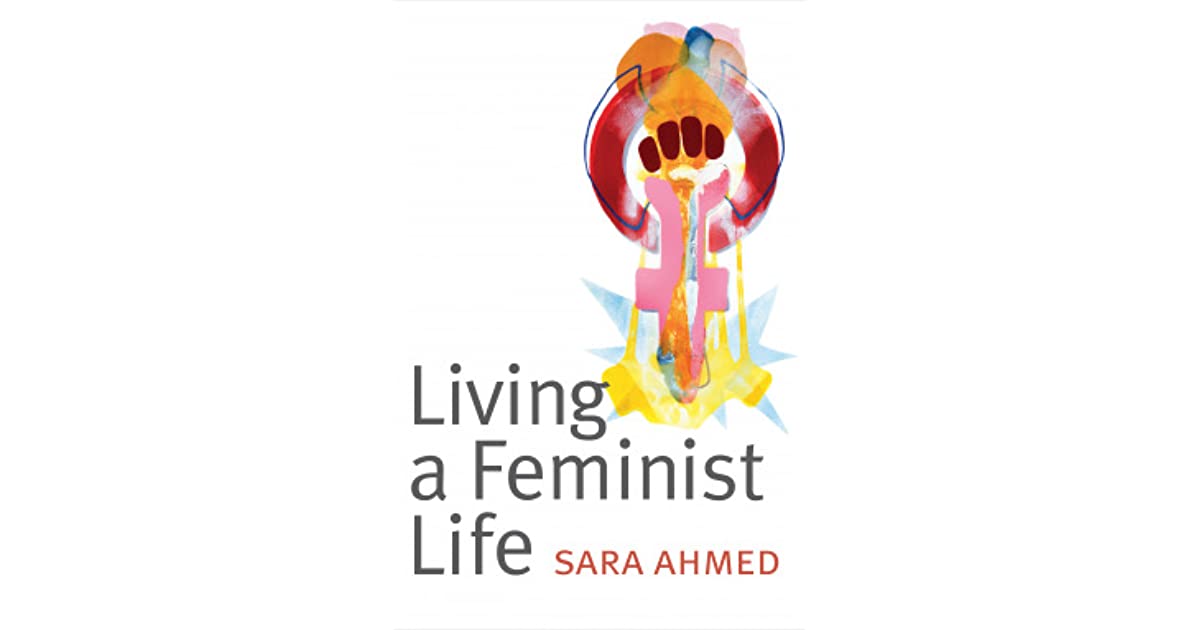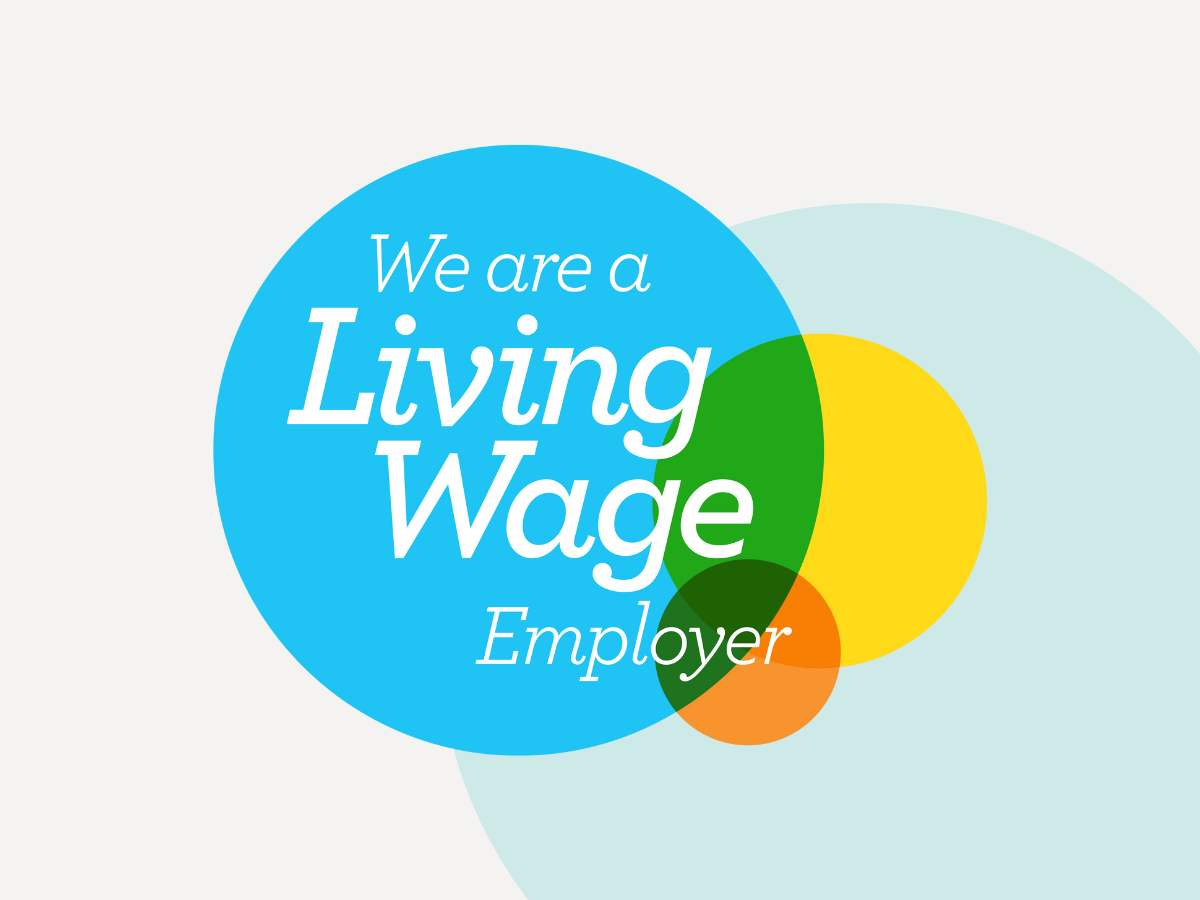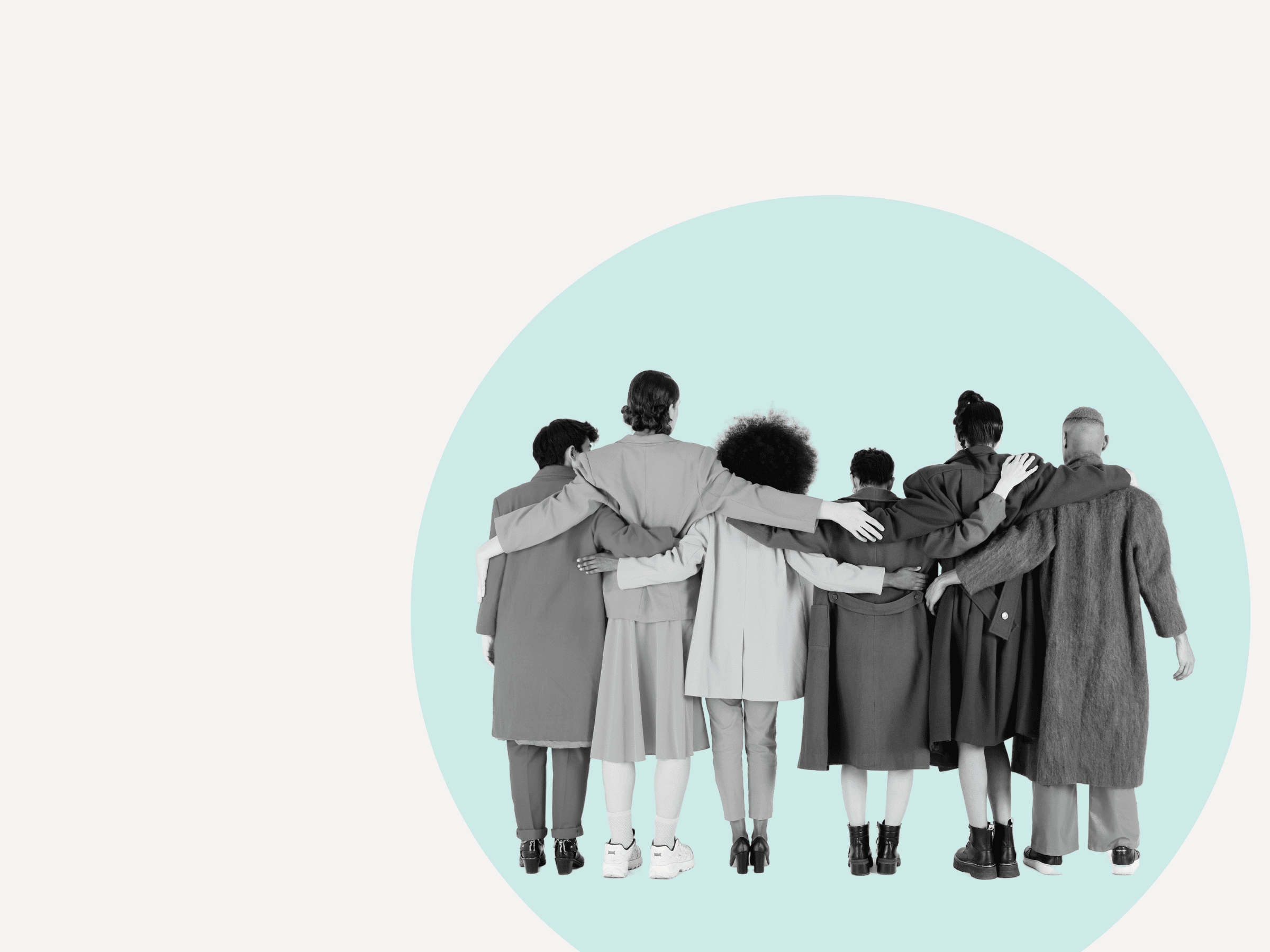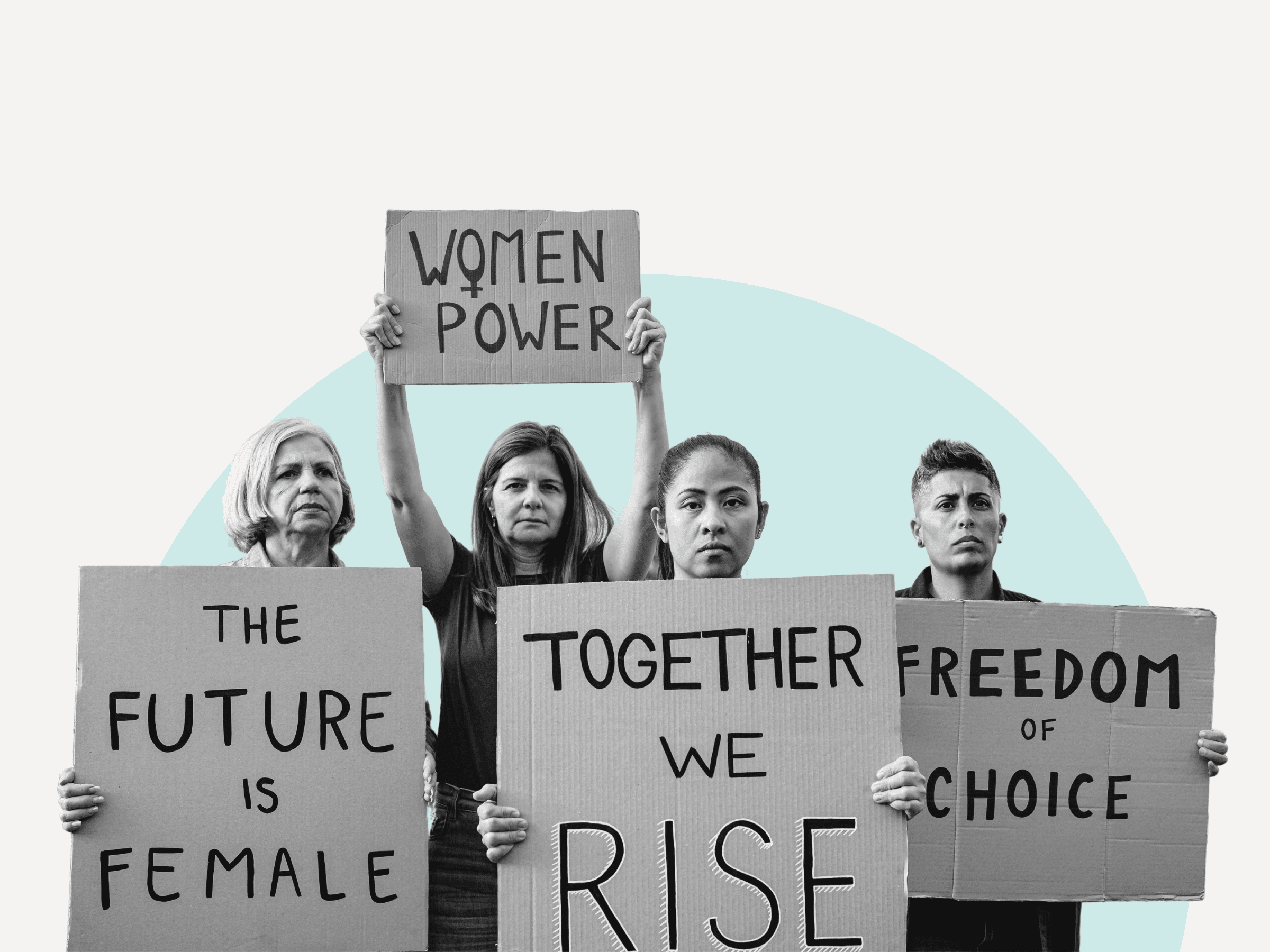/lu:talika/
Living a Feminist Life
Living a Feminist Life
Article
Cecilia Righini
This paper reviews the book ‘Living a Feminist Life’ by Sara Ahmed (2017). The book analyses the struggle of the feminist woman who cannot find a place in this world, as she is looking around and she sees something that other people cannot see. She lives in a parallel world, and she cannot bear all the injustice that she identifies around herself and that other people do not seem to notice. This book will take a young feminist into a journey of discovery, it is a manual that becomes crucial in all those moments we feel lonely and not appreciated because of our activism.
Introduction
‘What do you hear when you hear the word feminism?’ (p. 1): with this question, Sarah Ahmed brings her readers in the middle of an important subject. What does feminism mean in the 21st century? As I consider myself a feminist, I thought I had a decent idea of what it meant to me. But Living a Feminist Life goes beyond that. The book analyses the struggle of the feminist woman who cannot find a place in this world, as she is looking around and she sees something that other people cannot see. She lives in a parallel world, and she cannot bear all the injustice that she identifies around herself and that other people do not seem to notice. This book will take a young feminist into a journey of discovery, it is a manual that becomes crucial in all those moments we feel lonely and not appreciated because of our activism.
A project that comes from the critique of what is
In the first chapter of the book, Ahmed introduces the figure of the feminist killjoy, or ‘a project that comes from the critique of what is’ (2017, p. 249). To understand who this is and why anyone would want to be one, the author explains to us the personal motivation that brought her specifically, although many women might recognise themselves in this process, to see the world with different eyes and become a feminist. It starts from the everyday life: a sexist comment by a man on the street, perhaps being touched non-consensually. You start noticing the people around you, the space men occupy and the space women try to make for men. You want to understand why this is happening, so you might read some books from feminist writers and start putting the pieces together. Then, you realise it is really hard to stay silent in front of a sexist or racist comment, so you begin to call these problems with their names and unavoidably start to upset people around you because you ruined the flow of the conversation. Before you know it, you become the problem: you are not able to control yourself, to behave. You expose an issue and become one. In the sub-chapter ‘Alienation as sensation’, Ahmed explains how being a feminist means to live in a parallel world, and there is no coming back: once you embrace the figure of the killjoy, you will consider necessary to continue. Jumping ahead to the second conclusion of the book, Ahmed provides a killjoy manifesto, which she explains as ‘how a judgment becomes a project’ (p. 255). She clarifies that the manifesto should be personal, because of how each story unfolds into actions. This last chapter, which develops in ten principles, provides a summary of Ahmed’s argument, and the first four perfectly represent the figure of the killjoy (pp. 257-262):
- ‘I am not willing to make happiness my cause’: we do not take action just to make each other happy, especially when that translates into letting other people get away with sexist or racists comments to ensure they do not feel embarrassed or unhappy.
- ‘I am willing to cause unhappiness’: naming and pointing out a problem can and will cause unhappiness and discomfort, but that should not stop us as the gain of exposing an offensive behaviour is far more than the pain you caused.
- ‘I am willing to support others who are willing to cause unhappiness’: feminism is a movement, and it needs feminists to survive. Creating a shelter for other feminist killjoys is necessary to support the feminist movement.
- ‘I am not willing to laugh at jokes designed to cause offence’: this principle latches with the second one; we should not be afraid of coming across as the killjoy. The problem is not within us, the problem is the structural sexism and racism, and they are not a matter to laugh about.

Cover of ‘Living a Feminist Life’ by Sara Ahmed (2017)
Intersectionality
The second part of the book, Diversity Work, discusses the efforts and struggles of a diversity worker, or someone appointed by an institution to change its policies in order to conform to a new law. However, for how idyllic this role can look like, Ahmed explains how often the same institutions who hire someone to make a change, are not genuinely willing to be transformed. Furthermore, the diversity worker, who is usually someone who belongs to a minority, is constantly in question: because they are trying to change the way people of colour, queers and disable people inhabit the space around these institutions, there is an assumption that there is something wrong with them. On the contrary, the issue is not with them, but for the people who question them. To avoid the questions, then, you must learn to pass as something you are not (e.g. suntanned if you are brown, a cis woman if you are a trans woman) and work hard to show you are in your position as diversity worker not because of your diversity, but because of your own merit.
Throughout the book, Ahmed is not only talking about feminism and gender, but she constantly raises the matters of disability and especially of racism. As a white woman, I admit I wondered for a while about the reason why she was dealing with the subject so closely to feminism. I soon understood, however, that the connection between the two is significant, but it might escape to the eyes of a white person. In other words, ‘privilege is an energy-saving device’ (Ahmed, 2017, p. 125): a privileged person is required less inventive to be or to do and might struggle to notice the world outside the path that has been created for them.
This is relevant not only when talking about race, but also about disability. In the sub-chapter Fragile Bodies, Ahmed tells the personal experience of fracturing a bone and realising how, with the break of the body, the opportunities and actions depending on that bone broke with it, even if temporary. Therefore, she is forced to see the world from a perspective that was unknown to her before and probably would not have never experienced without this event.
Looking back to the killjoy manifesto, Ahmed continues with the next two principles as follow (pp. 262-264):
- ‘I am not willing to get over histories that are not over’: clearly not referring only to the need of a still needed activism for feminism, Ahmed explains that, in a world where we still justify wars passing them for bearers of freedom and equality, we are far from declaring histories of colonialism (and racism) over. Therefore, the feminist killjoy should not be afraid of raising these issues, even if some people might argue that we do not need to think or talk about it anymore as they are in past.
- ‘I am not willing to be included if inclusion means being included in a system that is unjust, violent, and unequal’: mostly here referring to systems as employers, Ahmed discourages people to be work for an institution which does not appreciate the value of intersectionality. For some individuals, especially professionals who highly value their careers, this is a hard step as they might be willing to compromise for a good role and a decent salary. However, for Ahmed (on a personal level) compromise is not acceptable as there is no halfway to achieve equality. We need to dismantle the systems that do not share these values, and the first step to achieve this goal is not to be associated with them.
The survival of a feminist killjoy
The last chapters of the book, together with the two conclusions/survival kits, give an overview of what does it mean to practically live as a feminist killjoy, as well as providing some tools to survive as one. The concept of survival is an interesting one for Ahmed. Drawing upon Audre Lorde’s texts A Burst of Light (1988) and The Cancer Journals (1997), the author refers to the word ‘survival’ as not only continuing to live, ‘but to but to keeping going in the more profound sense of keeping going with one’s commitments’, in our case, of course, the causes of equality and inclusivity.
In the first conclusion, Ahmed recommends feminist killjoys to assembles their own survival kits, or a list of anything that can help to bear a life that can sometimes become lonely. Her personal list (pp. 240-249), for example, include material (e.g. books, tools to write or material objects that can remind us of the reasons why we are living this life) but especially abstract things: she refers, for example, to the importance of time, humour, human connections with other killjoys and feelings. Killjoys need to allow themselves to feel sad and angry to start a revolution but be joyful about the achievements during their journey.
The killjoy manifesto continues with three important principles (pp. 264-267):
- ‘I am willing to live a life that is deemed by others as unhappy and I am willing to reject or to widen the scripts available for what counts as a good life’: living a feminist life means, often, to swim against the tide. It means that sometimes we need to become inventive to find our own way to be happy, as we tried the way society tries to force us to live our lives and it does not quite suit us.
- ‘I am willing to put the hap back into happiness’: in the book The Promise of Happiness (Ahmed, 2010), Ahmed explores the concept of how the word happiness, which is coming from the Middle English word hap, or chance, completely lost its original meaning. The word happiness, which has now such a heavy connotation, was once about chance (p. 196). We need to accept that it comes and goes and that it is not a forged path but an opportunity.
- ‘I am willing to snap any bonds, however precious, when those bonds are damaging to myself or to others’: even if society often put much pressure on certain bonds, such the ones between members of a family, Ahmed explains how we should not be afraid to cut a relationship if it becomes unbearable, even if it is a very significant one. Sometimes, we get close to people who, to a certain extent, believe that being a feminist is a sort of masochism, something that we throw upon ourselves because by living badly in relation to the world as it is. We should be able to realise that relationships with people who are not supportive and especially does not want to open their mind are toxic for a feminist killjoy, when we should be strong enough to snap the bond with them.
Conclusion: I am willing to participate in a killjoy movement
The last of the killjoy manifesto principles explain the reason of Ahmed’s book. ‘I am willing to participate in a killjoy movement’ (p. 267) sums up all of the author’s arguments in one simple statement: recognising the inequality in your surroundings and becoming a feminist is only the first step to help enter a state of activism that is much bigger than us. As feminists, we need feminism to survive: we need to find the courage to stand up for ourselves and others, and to do so we need to have the support of a larger movement that recognises the effort in our actions. But in the same way, feminism needs feminists: without our work and commitment, the change would not be possible. We need to work on both a micro and macro level, pointing out a sexist comment and working on the application of diversity and inclusivity policies. We owe it to everyone, but, most importantly, we owe it to ourselves.
About the Author
Sara Ahmed is an independent scholar and a feminist writer whose work is focused on the intersection of feminist, queer and race studies. Previous works include Queer Phenomenology: Orientations, Objects, Others (2006) and The Cultural Politics of Emotions (2004). Ahmed was a professor of Race and Cultural Studies at Goldsmiths, University of London until 2016, when she resigned ‘in protest against the failure to address the problem of sexual harassment’ (Ahmed, 2016). She now works as an independent scholar. Her influences include feminist writers such as Audre Lorde, bell hooks, Judith Butler and Virginia Woolf.
Bibliography
Ahmed, S. (2017) Living a Feminist Life. Durham: Duke University Press
Ahmed, S. (2006) Queer Phenomenology: Orientations, Objects, Others. Durham: Duke University Press
Ahmed, S. (2010) The Promise of Happiness. Durham: Duke University Press
Ahmed, S. (2016) ‘Resignation’, feministkilljoys, 30 May. Available here (Accessed: 21 September 2019)


